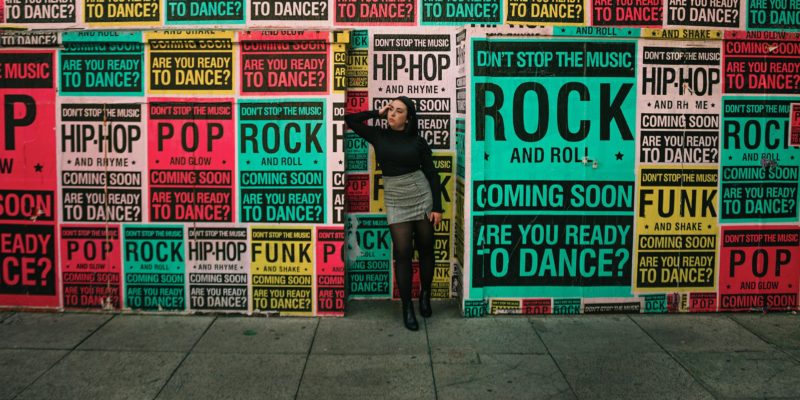When my friend Maria wrapped up her latest track—a tune so catchy you’d want to listen to
it on repeat—she hit a wall. Not literally, but in the metaphorical sense of ‘What on Earth do I
do next?’ Despite her obvious talent, Maria was unsure how to get her song out of her studio
and into the wild, wild web.
You see, music distribution is this big old bridge from the artist’s soundboard straight to the
listener’s ears, traditionally lorded over by the big-time record labels. But hey, it’s the 21st
century, and digital platforms have kicked down those gates, letting indie artists like Maria
storm through without needing an invite.
Maria’s dilemma got me thinking—how many other brilliant musicians are out there, tunes
ready, but no clue how to beam their beats across the globe? That’s why I decided to roll up
my sleeves and craft this guide. Digital platforms nowadays don’t just throw your music into
the abyss; they let you steer it, track it, and make sure it earns its keep.
So, let’s dive in, decode the digital distribution dance, and show you how to make your music
move. After all, if Maria decided to turn her laptop into a launchpad for future worldwide
jams, why shouldn’t you?
Why DIY Music Distribution?
DIY music distribution puts you in the driver’s seat of your music career. You get to own your
music rights, deciding where and how your tracks are sold, free from the tight grip of
traditional record deal contracts. Say goodbye to major labels slicing off a hefty chunk of
your profits.
Your freedom doesn’t stop there, because this kind of direct music distribution also means
you are able to create a closer connection with your audience, allowing for tailored marketing
and immediate fan feedback.
Step-by-Step Music Distribution Guide
Step 1: Preparing Your Music
It goes without saying that if you want to compete with major releases, make sure your
tracks are professionally mastered. Pay attention to the visual aspect as well; compelling
album art can catch the listener’s eye.
Furthermore, metadata plays a major role in discoverability and royalty collection. This
includes artist name, track titles, album name, genre, and ISRC codes for tracking sales and
plays. So get everything ready before the official release!
Step 2: Choose the Right Music Distribution Service
There are many digital music distribution services, which can only mean one thing: you have
complete control over who will gently deliver your music to your listeners’ ears. But before
you do, I will give you a couple of tips to help you choose the best service for your music:
● Choose where you want your music to be distributed. Does the distributor cover all
the major platforms, like Spotify, Apple Music, and TikTok?
● Understand their pricing system well. Some distributors offer tempting initial rates but
may have hidden fees. Check if they charge per release, annually, or take a
percentage of your royalties.
● Search for music distribution services that offer something additional, not just basic
distribution. Look for possible promotional tools, playlist placements, or analytics to
track your success.
● Read a lot of reviews. Positive reviews can indicate reliability, while frequent
complaints might raise red flags.
● Make sure the distributor has a dependable customer support team. If you have any
issues, it’s important to have quick and helpful support.
● Look for music distribution services that can adapt to your changing needs.
Here are some popular options you can start exploring right away:
● DistroKid shines with its offer of unlimited uploads for an annual fee, perfect for
artists with a prolific output.
● TuneCore stands out by charging per release, but sweetens the deal with detailed
analytics to help artists track song performance and reach.
● CD Baby is known for its wide reach and also offers physical distribution options,
which is relatively rare among distribution services.
● AWAL selects its artists carefully, providing strong marketing support and good
pay-out rates without any upfront fees.
● LANDR not only provides digital distribution but also offers automated mastering
services, making it a multifaceted platform for artists.
Step 3: Uploading Your Music
Ready to upload? Make sure your tracks are in high-resolution WAV format—the gold
standard for audio quality. While there are differences among platforms in terms of file
formats and quality, this is the most widely used one.
Again, don’t let metadata mishaps mess with your music mojo! A slip in the details (like the
artist’s name or track’s title) could send your royalties on a detour. Double-check your data
to keep your tunes and earnings in tune.
Step 4: Marketing Your Music
Ever noticed how your favourite artists seem to pop up everywhere? They’re on social media,
dropping snippets from the studio, sharing the nitty-gritty of their songwriting adventures, and
giving you a backstage pass to their creative process. And then, bam! There you are,
jamming to their latest track on your favourite Spotify playlist or catching a catchy tune on a
TikTok video.
Marketing your music is an art in itself, where the canvas stretches across every digital
platform you can think of. The key? A killer digital presence. Make sure your music isn’t just
floating around; it needs to be front and centre where your fans are scrolling and swiping.
Craft those artist profiles with care—snap some high-quality pics, write a bio that sticks, and
link up all your social handles.
Oh, and speaking of getting your music out there organically, have you checked out
SoundCampaign? It’s like having a friend in the industry. This handy platform gently nudges
your tracks into the playlists of Spotify curators and videos of TikTok creators who really vibe
with your style. To make sure that your songs reach listeners who will genuinely enjoy them,
it all comes down to creating connections that feel right. Think of it as your music finding new
fans all on its own!
Step 5: Monitoring Your Distribution
Check your music’s streaming and download stats often. Trust me, it can be really helpful for
your future releases because you can make some small adjustments to your marketing plan
and learn what your audience likes the most.
In other words, analytics will show you which songs are hits and where your biggest fans
are. This helps plan your next songs and tours.
If your music isn’t doing as well as expected, look at the data, get feedback, and change
your approach. Keep trying—that’s important.
Challenges in DIY Music Distribution
DIY music distribution offers artists more control and a chance for higher earnings, but it also
comes with challenges. Artists must handle many tasks themselves. This includes uploading
tracks to various platforms, ensuring all details are correct, managing royalties, and keeping
track of sales. This can feel overwhelming, especially if you’re new to these technical details
and trying to make music solo.
The best approach is to prepare well in advance. Learn about distribution processes before
you start sharing your music with listeners. This helps you manage everything more
smoothly.
Read, learn, ask a friend, and do whatever it takes to understand everything that awaits you
once you enter the music scene.
Inside tip: You can always check out SoundCampaign’s blog if you want to learn more.
Conclusion
Diving into DIY music distribution is like grabbing the wheel of your musical journey. You call
the shots on how and where your tunes make their grand entrance. Sure, there’s a whole
line-up of music distribution services to choose from—each with its own perks and quirks.
Before you commit, do a deep dive into what each offers; knowledge is your best ally here.
Being well-prepared means no surprises can throw you off your game.
But wait a second before you go. Always keep in mind that what speaks to you should be at
the centre of your music. Your passion for the art should drive your music-making rather
than your desire for money or fame. Audiences can sense authenticity, and they’ll tune out if
they don’t feel it. So, pour your passion into every note, stay curious, and always learn about
the industry, and you’re not just on a good path—you’re on your way to truly making waves.
Header Photo by Fred Souza.

